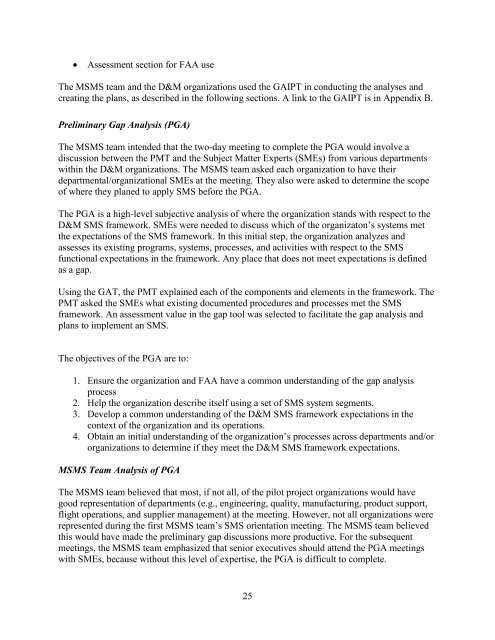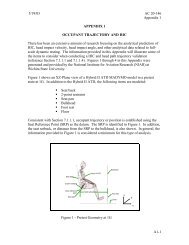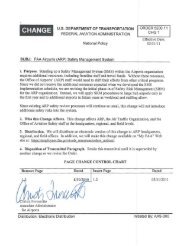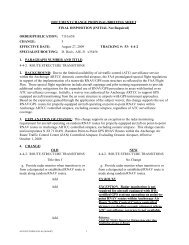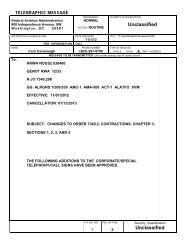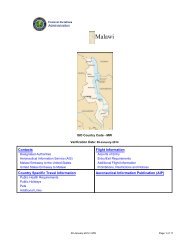2009 SMS Pilot Project (SMSPP) Analysis - FAA
2009 SMS Pilot Project (SMSPP) Analysis - FAA
2009 SMS Pilot Project (SMSPP) Analysis - FAA
You also want an ePaper? Increase the reach of your titles
YUMPU automatically turns print PDFs into web optimized ePapers that Google loves.
• Assessment section for <strong>FAA</strong> use<br />
The M<strong>SMS</strong> team and the D&M organizations used the GAIPT in conducting the analyses and<br />
creating the plans, as described in the following sections. A link to the GAIPT is in Appendix B.<br />
Preliminary Gap <strong>Analysis</strong> (PGA)<br />
The M<strong>SMS</strong> team intended that the two-day meeting to complete the PGA would involve a<br />
discussion between the PMT and the Subject Matter Experts (SMEs) from various departments<br />
within the D&M organizations. The M<strong>SMS</strong> team asked each organization to have their<br />
departmental/organizational SMEs at the meeting. They also were asked to determine the scope<br />
of where they planed to apply <strong>SMS</strong> before the PGA.<br />
The PGA is a high-level subjective analysis of where the organization stands with respect to the<br />
D&M <strong>SMS</strong> framework. SMEs were needed to discuss which of the organizaton’s systems met<br />
the expectations of the <strong>SMS</strong> framework. In this initial step, the organization analyzes and<br />
assesses its existing programs, systems, processes, and activities with respect to the <strong>SMS</strong><br />
functional expectations in the framework. Any place that does not meet expectations is defined<br />
as a gap.<br />
Using the GAT, the PMT explained each of the components and elements in the framework. The<br />
PMT asked the SMEs what existing documented procedures and processes met the <strong>SMS</strong><br />
framework. An assessment value in the gap tool was selected to facilitate the gap analysis and<br />
plans to implement an <strong>SMS</strong>.<br />
The objectives of the PGA are to:<br />
1. Ensure the organization and <strong>FAA</strong> have a common understanding of the gap analysis<br />
process<br />
2. Help the organization describe itself using a set of <strong>SMS</strong> system segments.<br />
3. Develop a common understanding of the D&M <strong>SMS</strong> framework expectations in the<br />
context of the organization and its operations.<br />
4. Obtain an initial understanding of the organization’s processes across departments and/or<br />
organizations to determine if they meet the D&M <strong>SMS</strong> framework expectations.<br />
M<strong>SMS</strong> Team <strong>Analysis</strong> of PGA<br />
The M<strong>SMS</strong> team believed that most, if not all, of the pilot project organizations would have<br />
good representation of departments (e.g., engineering, quality, manufacturing, product support,<br />
flight operations, and supplier management) at the meeting. However, not all organizations were<br />
represented during the first M<strong>SMS</strong> team’s <strong>SMS</strong> orientation meeting. The M<strong>SMS</strong> team believed<br />
this would have made the preliminary gap discussions more productive. For the subsequent<br />
meetings, the M<strong>SMS</strong> team emphasized that senior executives should attend the PGA meetings<br />
with SMEs, because without this level of expertise, the PGA is difficult to complete.<br />
25


